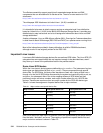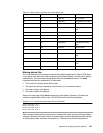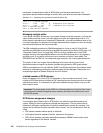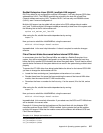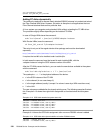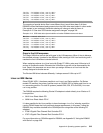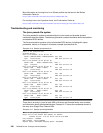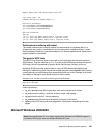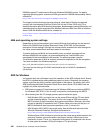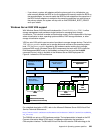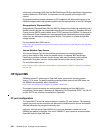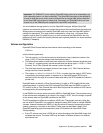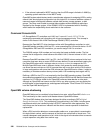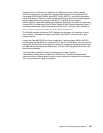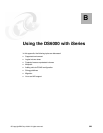322 DS6000 Series: Concepts and Architecture
DS6000 supports FC attachment to Microsoft Windows 2000/2003 servers. For details
regarding operating system versions and HBA types see the
DS6000 Interoperability Matrix,
available at:
http://www.ibm.com/servers/storage/disk/ds6000/interop.html
The support includes cluster service and acting as a boot device. Booting is supported
currently with host adapters QLA23xx (32 bit or 64 bit) and LP9xxx (32 bit only). For a
detailed discussion about SAN booting (advantages, disadvantages, potential difficulties, and
troubleshooting) we highly recommend the Microsoft document
Boot from SAN in Windows
Server 2003 and Windows 2000 Server
, available at:
http://www.microsoft.com/windowsserversystem/storage/technologies/bootfromsan/bootfromsanin
windows.mspx
HBA and operating system settings
Depending on the host bus adapter type, several HBA and driver settings may be required.
Refer to the
DS6000 Host Systems Attachment Guide, SC26-7628, for the complete
description of these settings. Although the volumes can be accessed with other settings too,
the values recommended there have been tested for robustness.
To ensure optimum availability and recoverability when you attach a storage unit to a
Windows 2000/2003 host system, we recommend setting the TimeOutValue value
associated with the host adapters to 60 seconds. The operating system uses the
TimeOutValue parameter to bind its recovery actions and responses to the disk subsystem.
The value is stored in the Windows registry at:
HKEY_LOCAL_MACHINE\SYSTEM\CurrentControlSet\Services\Disk\TimeOutValue
The value has the data type REG-DWORD and should be set to 0x0000003c hexadecimal
(
60 decimal).
SDD for Windows
An important task with a Windows host is the installation of the SDD multipath driver. Ensure
that SDD is installed before adding additional paths to a device. Otherwise, the operating
system could lose the ability to access existing data on that device. For details, refer to the
IBM TotalStorage Multipath Subsystem Device Driver User’s Guide, SC30-4096. Here we
highlight only some important items:
SDD does not support I/O load balancing with Windows 2000 server clustering (MSCS).
For Windows 2003, SDD 1.6.0.0 (or later) is required for load balancing with MSCS.
When booting from the FC storage systems, special restrictions apply:
– With Windows 2000, you should not use the same HBA as both the FC boot device
and the clustering adapter. The reason for this is the usage of SCSI bus resets by
MSCS to break up disk reservations during quorum arbitration. Because a bus reset
cancels all pending I/O operations to all FC disks visible to the host via that port, an
MSCS-initiated bus reset may cause operations on the C:\ drive to fail.
– With Windows 2003, MSCS uses target resets. See the Microsoft technical article
Microsoft Windows Clustering: Storage Area Networks at:
http://www.microsoft.com/windowsserver2003/techinfo/overview/san.mspx
Windows Server 2003 will allow for boot disk and the cluster server disks hosted on the
same bus. However, you would need to use Storport miniport HBA drivers for this
functionality to work. This is
not a supported configuration in combination with drivers
of other types (for example, SCSI port miniport or Full port drivers).



